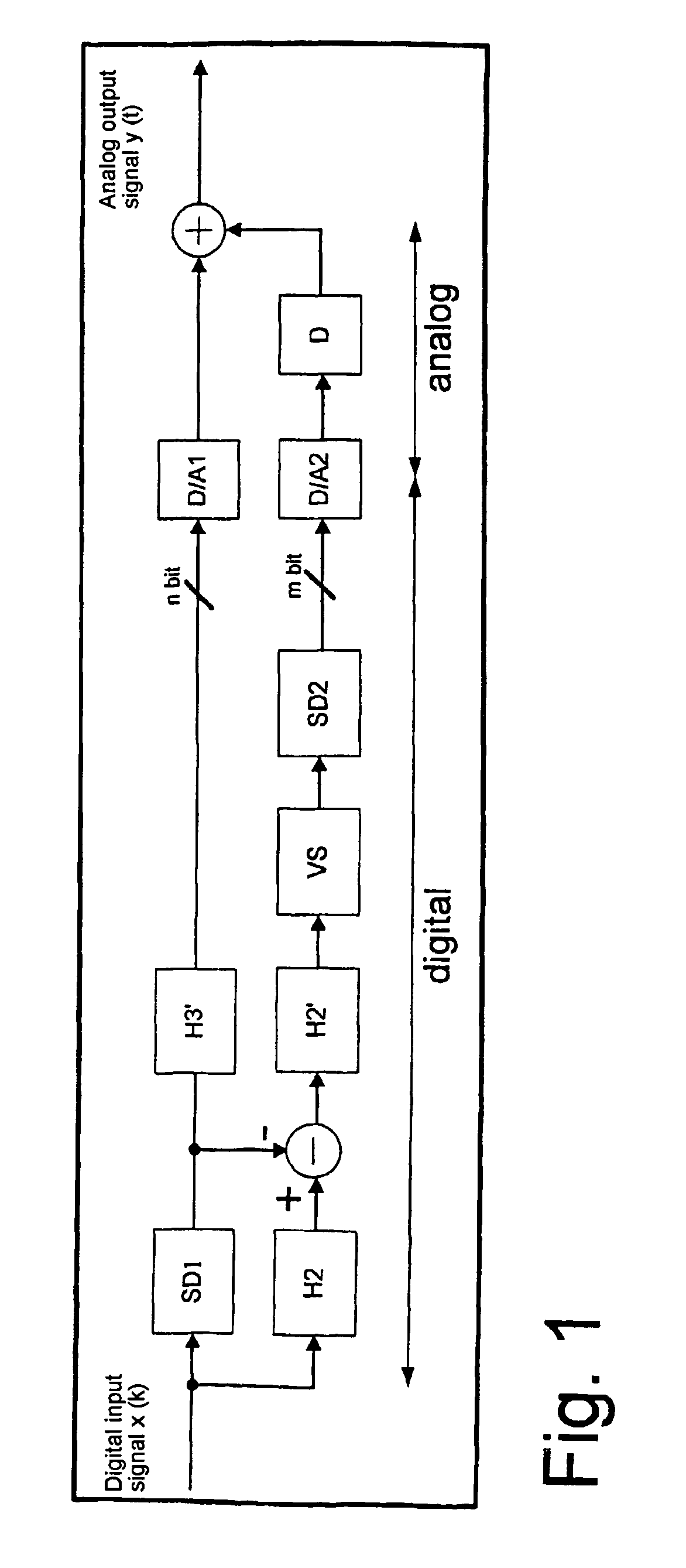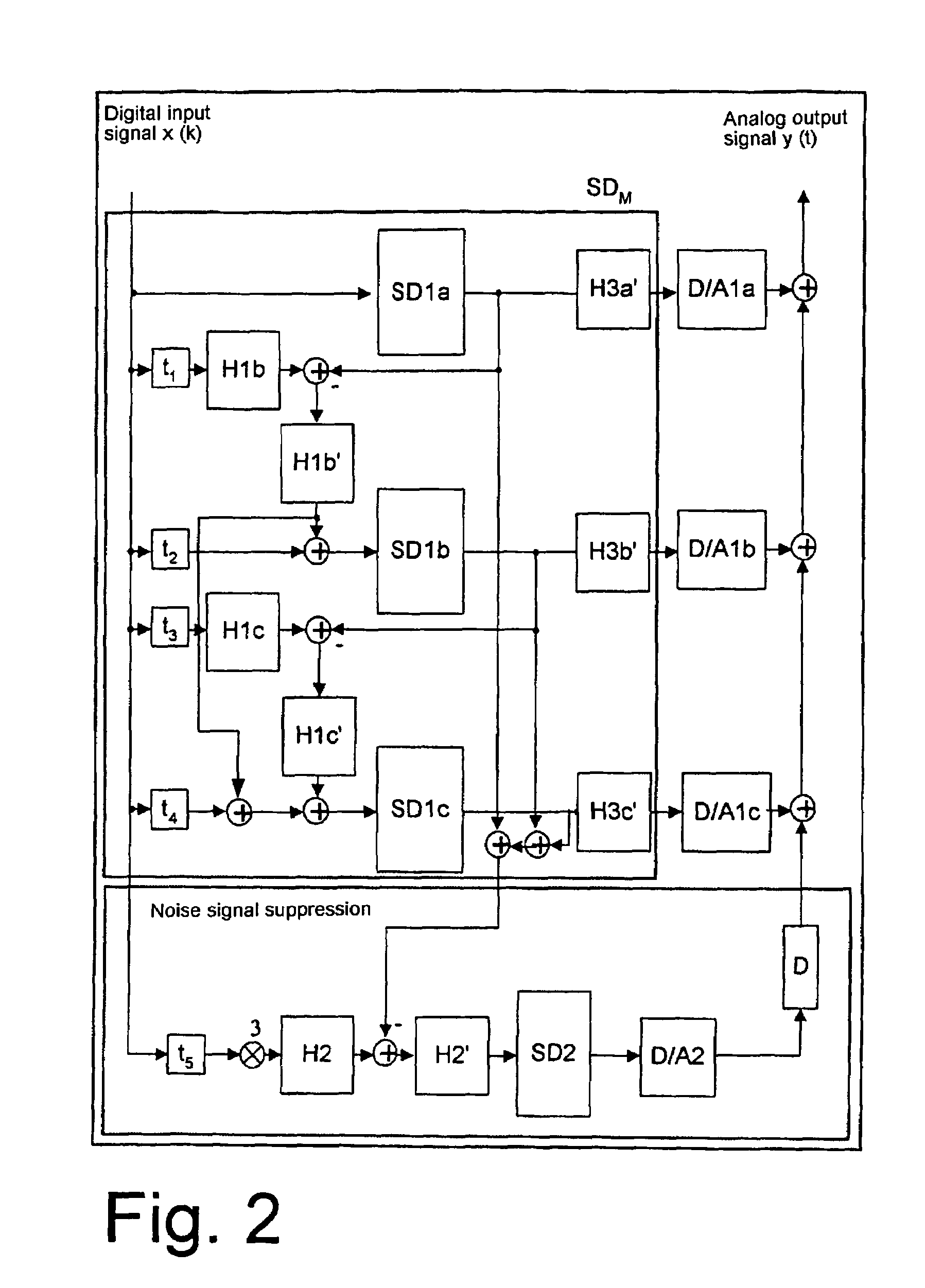Sigma-delta converter with noise suppression
a converter and delta technology, applied in the field of delta converters, can solve the problems of destructive overlaid noise components of the two paths
- Summary
- Abstract
- Description
- Claims
- Application Information
AI Technical Summary
Benefits of technology
Problems solved by technology
Method used
Image
Examples
Embodiment Construction
[0037]Reference will now be made in detail to the preferred embodiments of the present invention, examples of which are illustrated in the accompanying drawings, wherein like reference numerals refer to like elements throughout.
[0038]FIG. 1 shows the basic principle of a sigma-delta converter with noise suppression. A first sigma-delta modulator SD1 in the principal path generates a digital output signal with a bit width restricted to n bits from a digital input signal x(k). Due to this restricted bit width, a quantization error is created which is transformed by the sigma-delta algorithm outside the useful band in accordance with its noise transmission function. Significant noise signal components also fall into the useful band, however, particularly in the case of a low oversampling factor. To suppress these, the digital input signal x(k) is spectrally shaped by a filter H2 in a parallel oath in accordance with the signal transmission function of the first sigma-delta converter SD...
PUM
 Login to View More
Login to View More Abstract
Description
Claims
Application Information
 Login to View More
Login to View More - R&D
- Intellectual Property
- Life Sciences
- Materials
- Tech Scout
- Unparalleled Data Quality
- Higher Quality Content
- 60% Fewer Hallucinations
Browse by: Latest US Patents, China's latest patents, Technical Efficacy Thesaurus, Application Domain, Technology Topic, Popular Technical Reports.
© 2025 PatSnap. All rights reserved.Legal|Privacy policy|Modern Slavery Act Transparency Statement|Sitemap|About US| Contact US: help@patsnap.com



